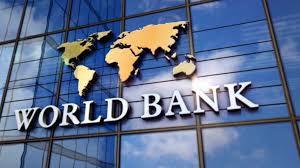Nigeria and other countries in Sub-Saharan Africa are projected to pay around $20 billion in interest on external debts by 2025, with nearly 75% of that amount owed to private creditors and Chinese lenders, according to a new report by the World Bank.
The report, titled “Improving Governance and Delivering for People in Africa” and released as the 31st edition of the Africa’s Pulse series, noted that the region’s external debt burden has grown significantly due to a shift in the composition of creditors and increased principal repayments.
“Since 2016, principal repayments have outpaced disbursements, leading to a steep drop in net external debt flows—from an average of $37.7 billion annually between 2016 and 2019, to just $18.4 billion in 2023,” the report stated.
Despite the growing debt pressures, the World Bank said Sub-Saharan Africa’s economy is showing signs of resilience. It projects regional economic growth to reach 3.5% in 2025 and rise to 4.3% by 2026–2027, driven by a recovery in private consumption and investment as inflation declines and currencies stabilize.
However, the Bank warned that growth remains insufficient to significantly cut poverty levels. Real income per capita in 2025 is projected to be around 2% below its 2015 peak. Poverty levels are expected to slightly decline from 43.9% in 2025 to 43.2% in 2027, based on the $2.15 per day threshold.
“Limited investments in income-generating sectors for the poor, lingering inflation effects, and likely declines in global donor aid remain key challenges to poverty reduction,” the report noted.
It also highlighted the need for policy reforms across the region to address governance issues and spur economic opportunities. Andrew Dabalen, World Bank Chief Economist for Africa, said governments must act urgently to bridge the gap between citizens’ aspirations and current economic realities.
“Reforms backed by transparency, competition, and accountability are essential to attract private investment, raise public revenue, and expand opportunities for the growing African workforce,” Dabalen said.
The World Bank also observed that the region’s overall economic performance continues to be dragged down by its largest economies — Nigeria, South Africa, and Angola. When these are excluded, the rest of Sub-Saharan Africa is projected to grow by 4.6% in 2025 and 5.7% by 2026–2027.
The services sector is expected to be a key driver of growth, particularly through rebounds in ICT, finance, and tourism. Agriculture is also projected to recover from recent lows, thanks to improved weather, infrastructure, and technology.
Inflation, which has been a major concern across the region, is reportedly easing. About 70% of countries in the region recorded a slowdown in inflation in 2024, aided by improved supply chains, tighter monetary policies, and greater currency stability.
However, inflation remains high in several countries. Fourteen nations—including Nigeria, Ethiopia, Angola, Ghana, Malawi, Sudan, and Zimbabwe—still have double-digit inflation rates. By 2027, this number is expected to fall to six.
The Bank cautioned that risks to the region’s economic outlook remain elevated due to global policy uncertainties, changes in the global trade system, and local fiscal constraints. Public spending is expected to remain limited, as governments juggle between debt servicing and investment in infrastructure and social services.
Edited by Nzubechukwu Eze.









